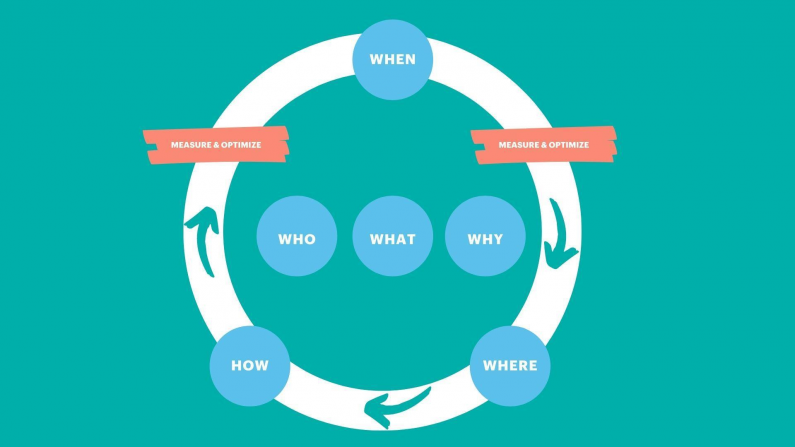
Raise a hand if you've ever been a bit overwhelmed in your journey as an online personal trainer.
When you decide to become an online personal trainer, you’re hit with a million strategies to start marketing your business which eats into your time to actually be a personal trainer.
Well, there’s some good news, by setting up a simple marketing framework you can quickly know where to focus your time and effort to attract new clients.
In this post, we jump into what a marketing framework is, and how it can help your online personal training business.
The Marketing Framework for Personal Trainers
You have so many opportunities (and distractions) when using digital marketing. So many that it's important to have a clear marketing plan. To organize your marketing plan, it's a priority to have a framework or template to work from.The marketing framework is simply an organized way to help you work out how you will do marketing for your PT business.
The parts of the framework are:
What:
The “What” refers to your offer, what are you marketing? You're marketing a Personal Trainer business, but more specifically the packages you'll be selling your clients.
This is where you detail what it is your PT business does and what services you offer. You want to define the value your business promises to deliver to your customers.
Who:
The “Who” refers to the audience to whom you'll be selling. Think about who your target audience is. An example would be if you wanted to concentrate on post natal training programs, you use this to understand who you'll be targeting. Obviously in our example new mums would be your target audience.
When:
“When”, refers to your customer journey. You're very lucky if you have a fully stacked client list from the start. Not all of your potential customers know about you and what you offer. The type of marketing you offer will depend on when, and where your PT clients are ready to receive it.
For example, It could be that your audience hang out on LinkedIn but don't know who you are yet. In this example you need a strategy to target these potential clients with an introduction and content before signing them up later on.
Why:
The “Why” is where you answer questions like “Why are you marketing to your target audience?”
This can be answered by understanding your marketing objective, which in your case could be things like:
1. Get more leads (email addresses)
2. Sell additional training packages
3. Launch a new training package
How:
The “How” refers to the messages and content you create to reach your target customers (target audience). This could be image posts on Instagram, and Pintrest, videos on YouTube and Facebook, or paid advertising on Google.
Where:
This refers to where you find your customers. We touched on this previously, the aim of this stage is to understand your target audience, which will let you know where your potential customers hang out. Is it looking at images on Instagram, catching up with news on Twitter, or are they in professional mode on LinkedIn.
This is important, as it lets you know what kind of content, or images you need to create to get your potential customers attention.
The combination of the Why, How, and where are often referred to as marketing tactics. These are tactics you use to accomplish your marketing plan.
Measure and optimize:
To understand what has worked (and what has not) in the areas above, you must measure the results of your marketing activity.
It could be that Pintrest actually generated the majority of email signups, or Facebook was your main lead source. Or it could be that your target audience prefers video updates rather than image posts. All of this data will allow you to optimize your marketing campaign to make sure you're reaching your target audience with the correct message on the best channel for you to achieve your marketing goal.
Final thoughts
As we mentioned at the start of this post, the many facets of running a personal training business can seem overwhelming. But, by taking the marketing framework we have gone through you will be able to create a clear marketing plan where you can start to create your target audiences, and also plan which channels you'll be targeting new clients on.Spend 10 - 20 minutes going through this framework, and start figuring out your marketing plan.


